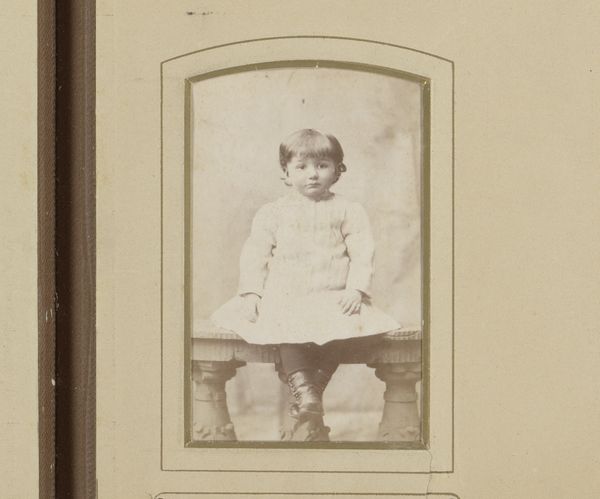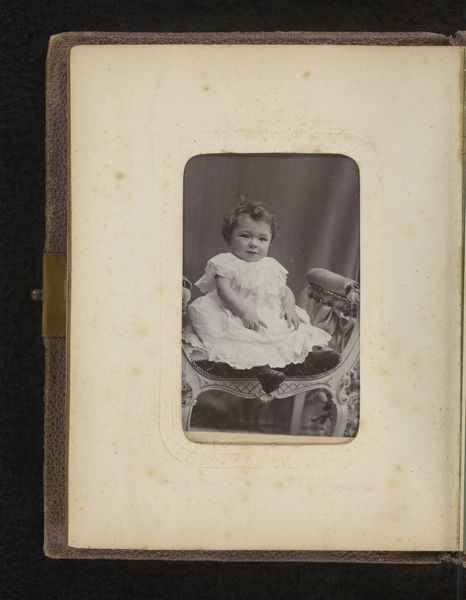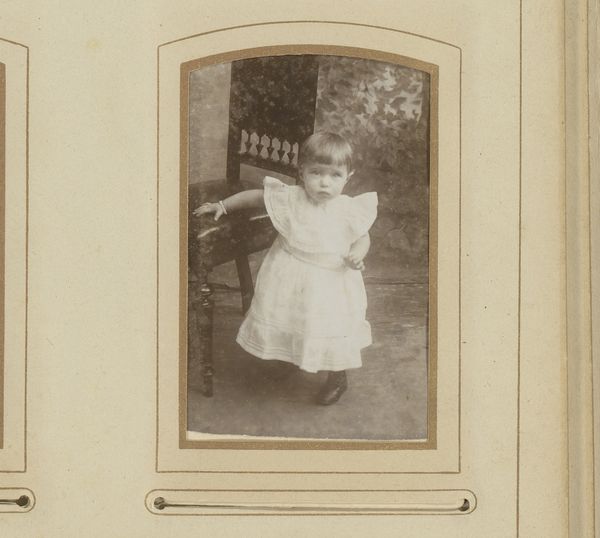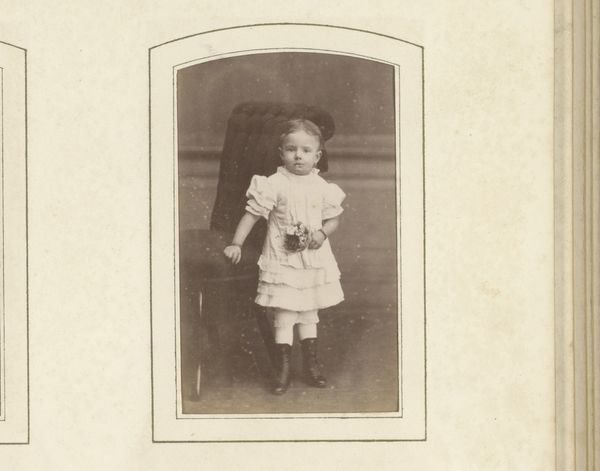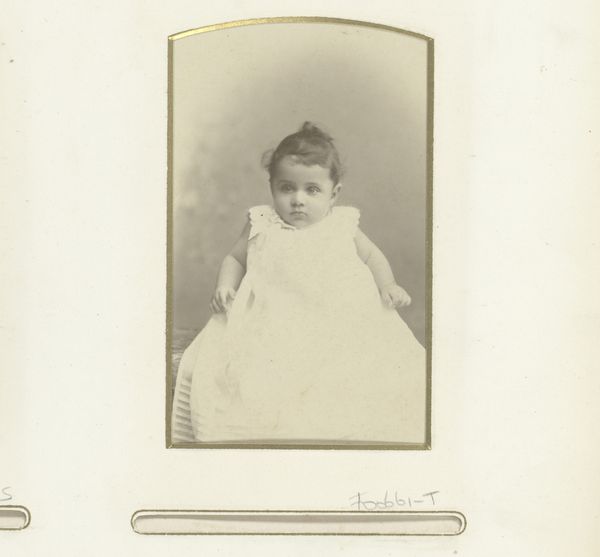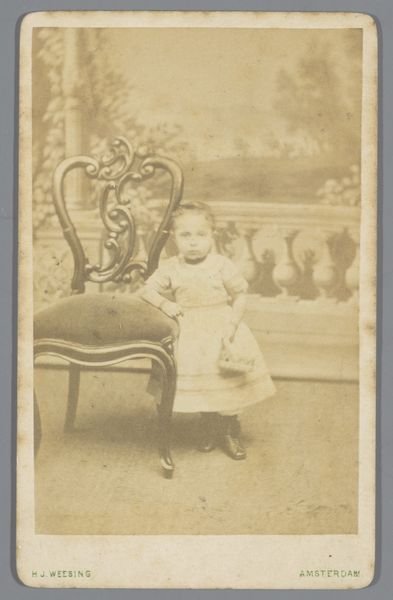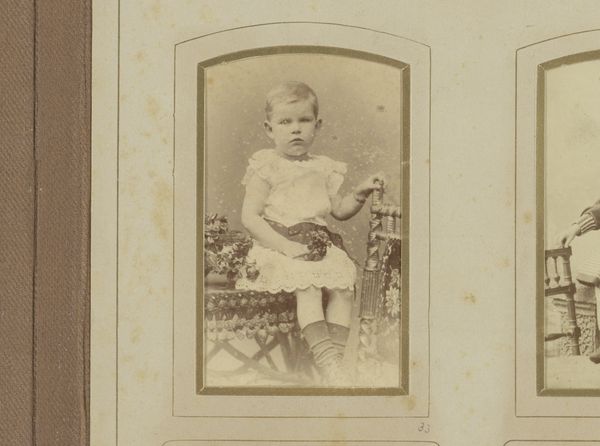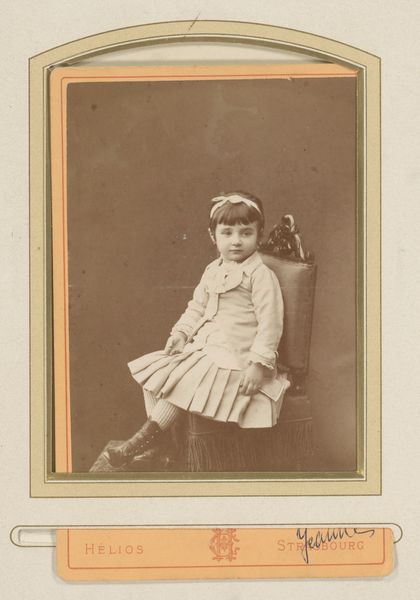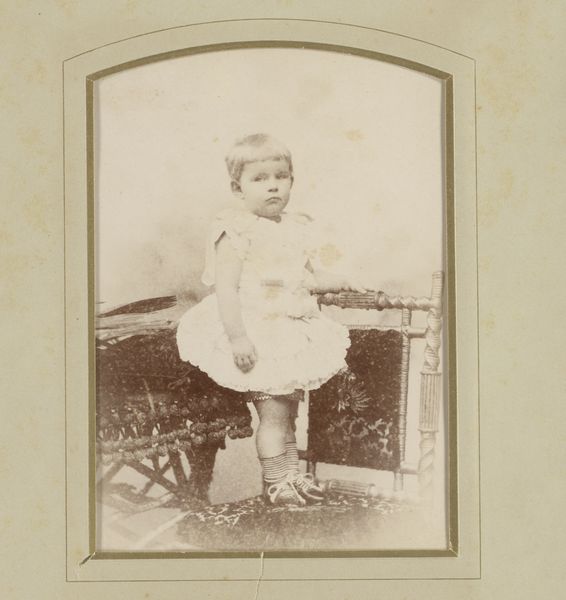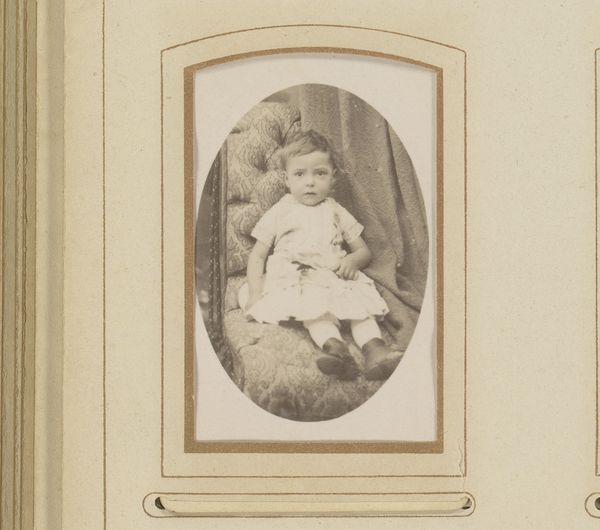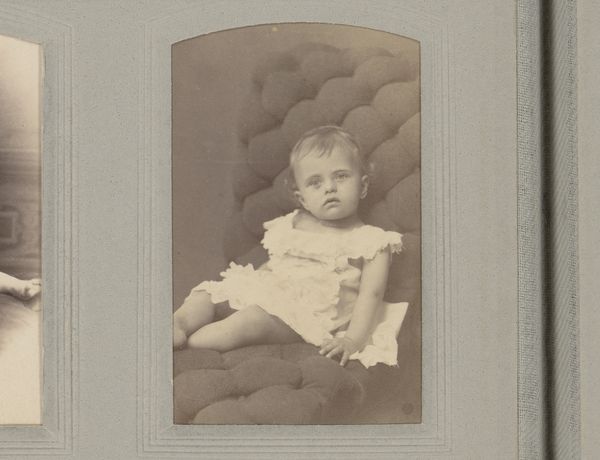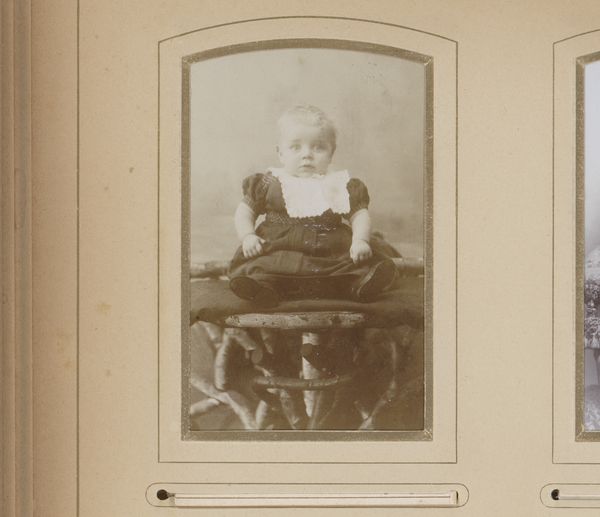
photography, gelatin-silver-print
#
portrait
#
photography
#
historical photography
#
gelatin-silver-print
#
19th century
Dimensions: height 85 mm, width 51 mm
Copyright: Rijks Museum: Open Domain
Editor: This is "Portret van Raymonde van Hoecke," taken around 1897 by Georges Verger, a gelatin-silver print. It’s really evocative. There's almost a ghostly quality to this photograph – it feels both intimate and distant at the same time. The girl looks a bit… forlorn. What do you see in this piece, what’s your interpretation? Curator: Forlorn is a great word. Looking at this photograph feels like stumbling upon a memory, perhaps one not entirely my own but familiar nonetheless. There’s the slight damage to the emulsion, those ethereal scratches that time has etched, as if reality itself is cracking. That reminds me of what Roland Barthes said about photography being linked to death – *that-has-been*. Notice how tightly the child clutches her doll and ball, seeking solace from the photographer's lens. I see a universal portrait of childhood and a bittersweet reflection on innocence and impermanence. Do you notice the backdrop behind her, Editor? Editor: Yes, vaguely. It's blurry and hard to make out much. Almost looks like something from an old master painting hanging on the wall. Curator: Exactly! Verger was a keen student of the Old Masters, something the sharp, raking light reinforces, don't you think? The pose too. Photographers often looked to painting for composition. They had to create art through different means. The doll is obviously precious to the little girl, it appears she is not amused to be the subject. What do you think about how the artist wants us to think or feel? Editor: It definitely makes you consider what her life was like. She is also shielding us with this doll... It makes you think about how photos were considered, or not considered art, at this time, and whether the photographer had agency to portray how he or she wants, like a painter could do, but the photographic apparatus still needed to convince its "subjects". Thanks, I found your insights fascinating and helpful in thinking about the relationship between the art of painting and the mechanical means that photography developed through. Curator: And for me, this little snapshot really proves how an image can speak a thousand different words – some joyous, some haunting, all valuable. Thanks!
Comments
No comments
Be the first to comment and join the conversation on the ultimate creative platform.
